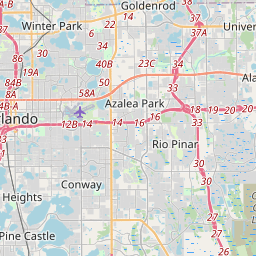Inscription
November 3, 1920
On Election Day, November 3, 1920, black residents in the Ocoee area who owned land and businesses were eager to vote. Despite a terrorizing Ku Klux Klan march through the streets of Orlando three days earlier, Mose Norman and other African Americans attempted to vote. They were turned away. After seeking advice from Orlando Judge John Cheney, Mr. Norman again attempted to vote. Armed white men stationed at the polls immediately assaulted him. He reportedly fled to the home of his friend and business associate, July Perry. A mob seeking to capture Mr. Perry and Mr. Norman surrounded and burned Mr. Perry's home. Mr. Norman escaped, but Mr. Perry was severely wounded. He was arrested, taken to Orlando, and locked in the Orange County Jail. The next morning, a lynch mob took Mr. Perry from his cell, brutally beat him, and hanged him within sight of Judge Cheney's home. His lifeless body was shot repeatedly. Over the next two days, a white mob burned 25 black homes, two black churches, and a masonic lodge in Ocoee. Estimates of the total number of black Americans killed during the violence range from six to over 30. Survivors fled, never to return. The entire black community of Ocoee was driven out within a year, forced to abandon or sell land and homes they owned. The Ocoee Election
Day Massacre represents one of the bloodiest days in American political history. July Perry is buried in Orlando's Greenwood Cemetery.
Racial Violence in America
Thousands of black people were the victims of lynching and racial violence in the United States between 1877 and 1950. The lynching of African Americans during this era was a form of racial terrorism intended to intimidate black people and enforce racial hierarchy and segregation. Lynching was most prevalent in the South, including Alabama, Arkansas, Florida, Georgia, Kentucky, Louisiana, Mississippi, North Carolina, South Carolina, Tennessee, Texas, and Virginia. After the Civil War, violent resistance to equal rights for African Americans and an ideology of white supremacy led to violent abuse of racial minorities and decades of political, social, and economic exploitation. Lynching became the most public and notorious form of terror and subordination. White mobs were usually permitted to engage in racial terror and brutal violence with impunity. Many black people were pulled out of jails or given over to mobs by law enforcement officials who were legally required to protect them. Terror lynchings often included burning and mutilation, sometimes in front of crowds numbering in the thousands. In response to this racial terror and violence, millions of black people fled the South
and could never return, which deepened the anguish and pain of lynching. Many of the names of lynching victims were not recorded and will never be known, but over 300 documented lynchings took place in Florida alone. Researchers estimate at least 33 in Orange County — the most lynchings of any county in the state.
Details
| HM Number | HM2J96 |
|---|---|
| Tags | |
| Year Placed | 2019 |
| Placed By | The Equal Justice Initiative |
| Marker Condition | No reports yet |
| Date Added | Wednesday, July 31st, 2019 at 11:02am PDT -07:00 |
Pictures
Locationbig map






| UTM (WGS84 Datum) | 17R E 463016 N 3157388 |
|---|---|
| Decimal Degrees | 28.54276667, -81.37805000 |
| Degrees and Decimal Minutes | N 28° 32.566', W 81° 22.683' |
| Degrees, Minutes and Seconds | 28° 32' 33.96" N, 81° 22' 40.98" W |
| Driving Directions | Google Maps |
| Which side of the road? | Marker is on the right when traveling West |
| Closest Postal Address | At or near , , |
| Alternative Maps | Google Maps, MapQuest, Bing Maps, Yahoo Maps, MSR Maps, OpenCycleMap, MyTopo Maps, OpenStreetMap |
Is this marker missing? Are the coordinates wrong? Do you have additional information that you would like to share with us? If so, check in.
Maintenance Issues
- What country is the marker located in?
- Is this marker part of a series?
- What historical period does the marker represent?
- What historical place does the marker represent?
- What type of marker is it?
- What class is the marker?
- What style is the marker?
- Does the marker have a number?
- This marker needs at least one picture.
- Can this marker be seen from the road?
- Is the marker in the median?

Comments 0 comments